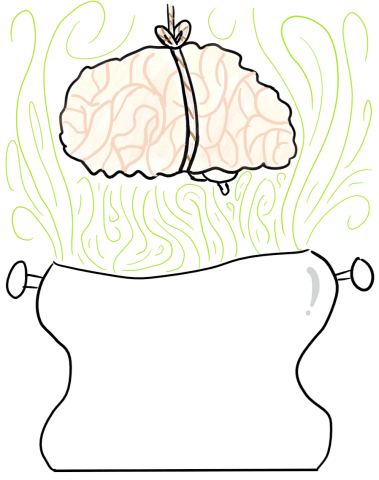Cannabis legalization will likely increase interest for both its recreational and medicinal applications. While there’s a lot of information out there on how this drug affects your brain — from both pro-cannabis and anti-drug campaigns — it’s apparent that more research is needed to answer the big questions.
The shift of cannabis from an illicit drug to a health product has been a strange metamorphosis over the last decade. Legalization may seem like a natural step forward, but with easier access, perhaps more education and understanding is needed.
Dr. Robert Laprairie, assistant professor in the College of Pharmacy and Nutrition and GlaxoSmithKline chair in drug discovery and research, explains how cannabis affects our brains.
“We have an endogenous cannabinoid system,” Laprairie said. “And we have receptors in our brain — CB1, in particular — [that] are expressed on what are called the presynaptic neurons.”
Laprairie explains that this endogenous system is involved in communication between neurons in our brains. The presynaptic neuron releases a signal to its neighbour. This neighbouring neuron gets excited, makes something called endocannabinoids — your body’s natural cannabinoids — and sends them back to the first neuron where they bind to the receptor. This tells the neuron to slow down and stop releasing signals.
“That way, those cannabinoids are acting as a neuronal break,” Laprairie said. “When you have other cannabinoids — particularly THC — in the mix, they’re just acting to boost that breaking effect. So it’s like throwing the emergency brake in addition to everything else.”
THC, or tetrahydrocannabinol, is the primary substance in cannabis that gets you high. While there has been some research suggesting that THC might be an option to treat some forms of acute pain, and perhaps, appetite stimulation in some patients suffering from terminal illnesses, THC is not the main medicinal molecule.
Cannabidiol, or CBD, is another compound that works in the brain, but unlike THC, it will not get you high. CBD is the main interest when looking into the pharmaceutical applications of cannabis.
Laprairie says that a few neurological and psychiatric conditions may benefit from cannabinoids. Evidence suggests that multiple sclerosis and Parkinson’s disease are good candidates, in this respect, and that anxiety and post-traumatic stress disorder might also be effectively managed. According to Laprairie, the jury is still out, however, and more evidence is needed for these conditions.
With greater access to recreational cannabis, there are questions surrounding how the substance will affect the brains of users. Warnings have been circulating for years about the negative effects that cannabis has on the developing brain, and there’s even speculation that it can contribute to the development of schizophrenia and psychosis.
Dr. John Howland — a professor in the anatomy, physiology and pharmacology department and head of the Howland Lab, a behavioural neuroscience lab at the University of Saskatchewan — explains what the current research has to say.
“People with the disorder use more cannabis than the general population, but it’s not clear whether the drug causes or exacerbates schizophrenia or if patients smoke it in an attempt to self medicate or if there are common genetic factors that predispose people to [both] cannabis use and schizophrenia,” Howland said in an email to the Sheaf.
Howland adds that there are no firm answers to this question yet but that there is considerable investigation being done on the subject.
Legalization in Saskatchewan prohibits cannabis use for people under 19 years of age, but it’s hard to say exactly how much this will deter usage among adolescents. Howland says there are concerns about the use of cannabis during adolescence.
“It appears that the endocannabinoid system is involved in brain development, including adolescence, so altering its activity is of concern,” Howland said.
When it comes to the effects of cannabis on our brains, there are many things we still don’t know. Legalization has the potential to stimulate new research efforts, and going forward, a focus on research and education is what’s really needed to understand exactly what cannabis is capable of.
—
Erin Matthews / Opinions Editor
Graphic: Wei Soong Lau